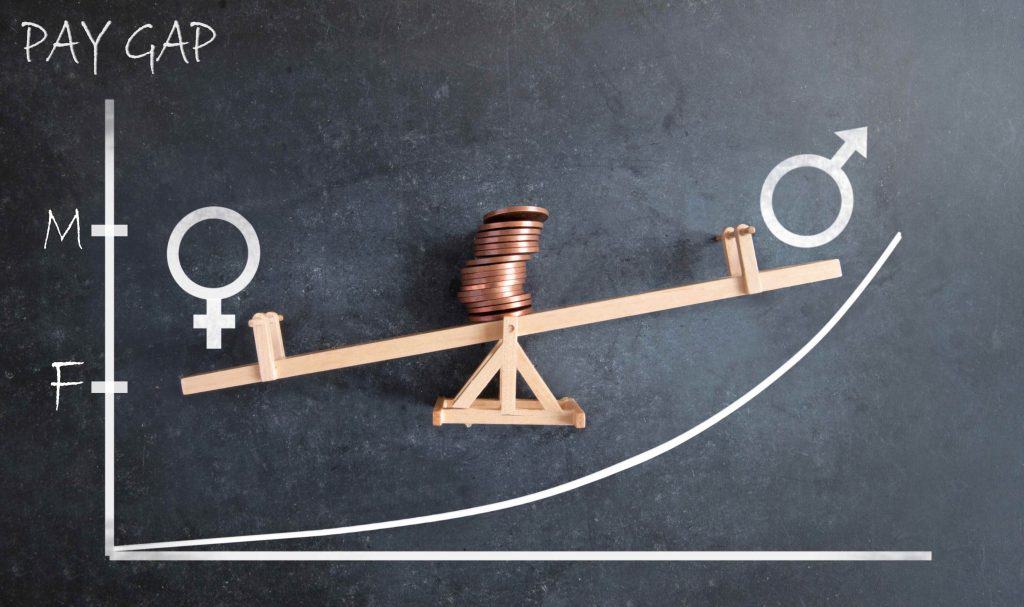
In today’s dynamic and ever-evolving society, we have made significant strides towards gender equality. We have witnessed groundbreaking advancements in women’s rights, increasing female representation in leadership roles, and a growing awareness of the need for diversity and inclusiveness. However, despite these commendable milestones, there remains an undeniable disparity in pay between genders—a persistent issue that calls for our undivided attention and action.
Understanding the Gender Pay Gap – What is the gender pay gap?
In general, the gender pay gap refers to the difference in average earnings of people based on gender. It is a widely recognized indicator of gender inequities, and it exists across industries and professional levels. There are different ways of measuring the gap, but no matter how you measure it, the gap still exists.
The gender pay gap is worse for those who face multiple barriers, including racialized women, Indigenous women, and women with disabilities. Though it differs by age group, the gap starts from a young age and carries into the senior years (Moyser, Statistics Canada, 2019).
Why is ending the gender pay gap so urgent?
– It’s one of the root causes of gender poverty. Women are more vulnerable to low income than men in Canada, partially due to the gender pay gap (Fox and Moyser, Statistics Canada, 2018).
– It impacts all life stages. Girls 12 to 18 experience a summer job gender pay gap of almost $3.00 per hour (Girl Guides of Canada, 2018). Women post-secondary students leave school with student loans to pay and lesser means to do so (Canadian Women’s Foundation, 2019). And it contributes to a gendered pension gap of 22%, where women retire with only about 80% of the pension men retire with (Mercer CFA Institute, 2021).
– It has implications on a global scale. When it comes to the gender gap in overall economic participation and opportunity, Canada ranks only 40 in the World Economic Forum’s (2021) listing of 156 countries.
The Current Landscape of Gender Pay Equality
As we delve into the complexities of the gender pay gap, statistics continue to reveal a disconcerting picture. According to recent reports, women globally earn, on average, only 77 cents for every dollar earned by men. This gap widens further for women of color, women with disabilities, and those in lower-income brackets. The reasons behind this inequality are multifaceted, ranging from societal norms and unconscious biases to lack of access to the same opportunities as their male counterparts.
The Power of Skill-Based Training
One of the most effective tools at our disposal to combat this inequity is skill-based training. By focusing on the talents and capabilities of employees rather than their gender, organizations can create a more level playing field. Skill-based training empowers individuals to hone their competencies, fostering a culture of meritocracy where rewards and promotions are based on performance and expertise. This approach not only enhances workplace culture but also drives employee satisfaction and retention.
DEIB: The Catalyst for Change
Diversity, Equity, Inclusion, and Belonging (DEIB) are not just buzzwords; they are essential pillars for any forward-thinking organization. DEIB initiatives ensure that diverse voices are heard and valued, equity is woven into the fabric of the company, inclusion becomes a daily practice, and a sense of belonging is nurtured among all employees. By embracing DEIB, businesses can dismantle systemic barriers to equal pay and create an environment where every individual has the opportunity to thrive.
The Business Case for Gender Pay Equality
While the moral imperative for gender pay equality is clear, there is also a strong business case to be made. Organizations that champion equal pay and employ skill-based training and DEIB principles are more likely to attract top talent, increase employee engagement, and drive innovation. Moreover, companies with diverse leadership teams have been shown to outperform their less diverse counterparts, leading to increased revenue and market share.
Identifying Standouts and Rewarding Equally
To ensure that all employees are compensated fairly, organizations must implement transparent processes for identifying high performers and distributing rewards. This includes regular pay audits, unbiased performance evaluations, and clear criteria for bonuses and promotions. By recognizing and compensating the contributions of every employee, businesses can foster a sense of fairness and motivation that propels the entire organization forward.
As we celebrate the progress made in the realm of gender equality, we must also recognize the journey that lies ahead. The gender pay gap is a challenge that continues to undermine our collective efforts towards a more equitable society. However, by leveraging skill-based training and DEIB initiatives, we can create workplaces that not only champion equal pay but also enhance culture, satisfaction, and financial success. It is time for organizations to lead by example, embracing these strategies as a blueprint for a fairer, more inclusive, and prosperous future for all.
Let’s Turn Insights Into Action!
You’ve read the ideas—now let’s make them work for your team.
Schedule a call with Michelle to tackle challenges and uncover opportunities.
In one call, you’ll gain clarity, actionable steps, and solutions tailored to your goals.
Ready to make a change?

